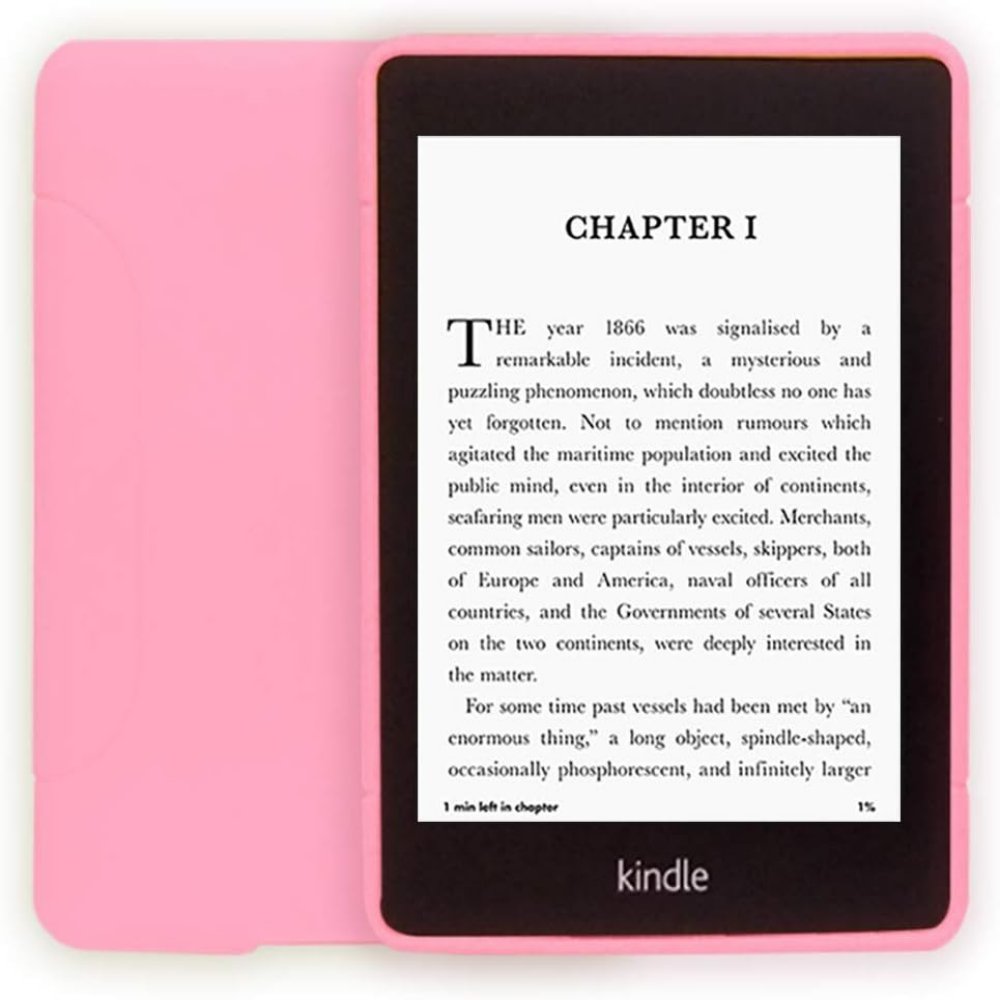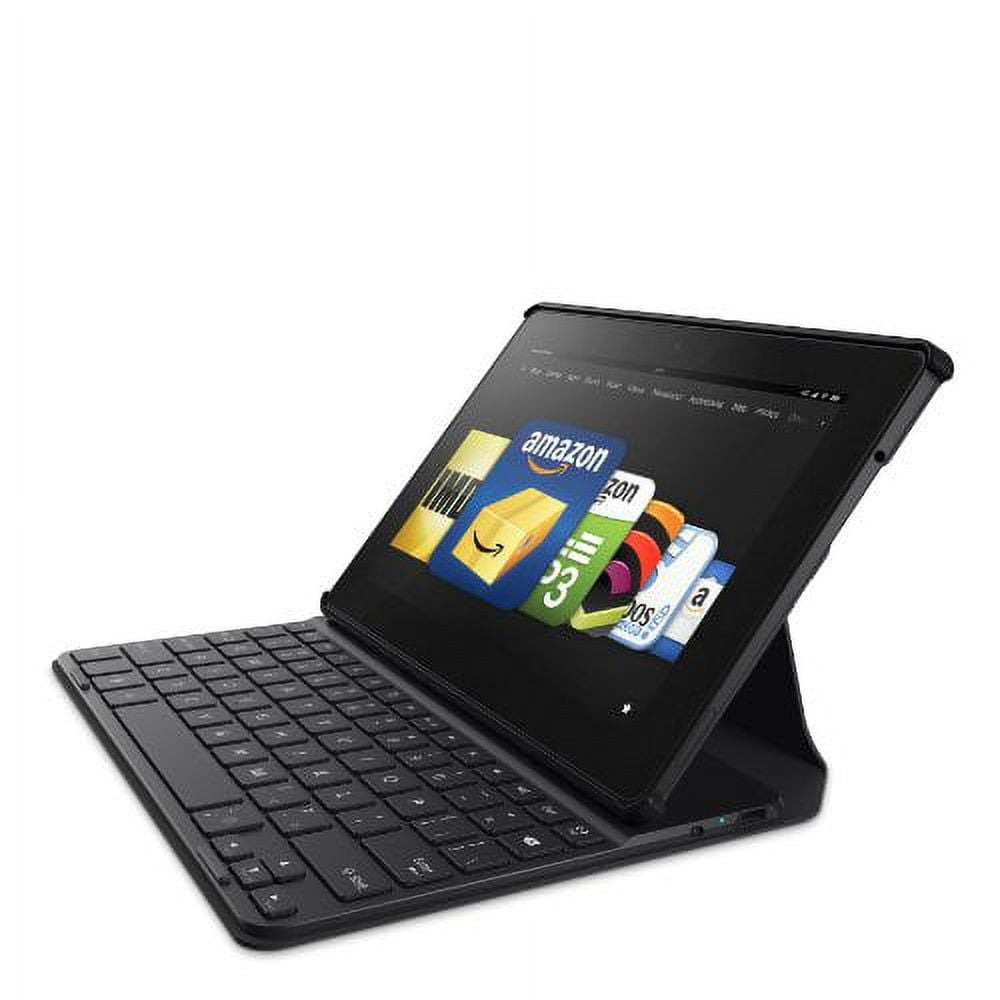The Rise and Fall of the Kindle Keyboard
The Kindle Keyboard, once a flagship device, peaked in popularity during the early 2010s. Its tactile keyboard appealed to those who loved the feel of typing on physical keys. Users found it great for taking notes and searching without needing on-screen keyboards. Yet, with the advent of touchscreen technology, the once-beloved Kindle Keyboard saw a gradual decline.
Newer Kindle models, sleek and button-free, captured the market, offering high-resolution displays and intuitive touch controls. It seemed the Kindle Keyboard had fallen out of favor, overshadowed by swift technological progress. Book lovers who favored the no-frills reading experience mourned its disappearance.
Today, we’re seeing whispers of its return. It’s interesting to watch how the tide is shifting as sentiments and demands evolve in the e-reader market. Could the Kindle Keyboard reclaim its throne? This blog explores the possibilities and reasons behind its potential resurgence.

Why the Kindle Keyboard is Making a Comeback
The Amazon Kindle Keyboard is staging a surprising return. Changes in user preference and market dynamics play a role. Here’s why the Kindle Keyboard is attracting attention again:
Renewed Appreciation for Tactile Feedback
Users missed the haptic response of physical keys. Typing on a Kindle Keyboard feels more deliberate and satisfying for many. Unlike touchscreen devices, it provides distinct tactile feedback. This feature is now a unique selling point.
Demand for Distraction-Free Devices
E-readers with keyboards offer fewer distractions. They bring focus back to reading and writing, without the fuss of apps and notifications. The Kindle Keyboard’s simple interface appeals to those seeking a serene reading environment.
Technological Nostalgia
Tech nostalgia is driving interest in retro devices. A growing segment of consumers longs for the familiarity of past technologies. The Kindle Keyboard resonates with this sentiment, bringing a sense of comfort and nostalgia.
Enhanced Productivity Features
For avid note-takers and writers, the Kindle Keyboard’s built-in keyboard is indispensable. The ability to take notes directly into the device is a boon for productivity. Users can easily annotate books, making the Kindle Keyboard ideal for researchers and students.
Overall, the Amazon Kindle Keyboard is making a comeback for several good reasons. It addresses a niche market that values the user experience offered by tactile keyboards. As we continue to see, the most advanced technology isn’t always the most beloved. Sometimes, a step back to the familiar can be a leap forward in user satisfaction.
Comparing Kindle Keyboard to Touchscreen Models
When considering the Kindle Keyboard versus modern touchscreen models, there are key differences to note.
Design and Usability
The Kindle Keyboard boasts physical buttons, offering a tactile experience. People who type a lot appreciate this design. Touchscreens, on the other hand, are sleek and more visually appealing. These models offer a more minimalistic approach, perfect for readers preferring a modern look.
Battery Life
Kindle Keyboards generally have longer battery life due to their simpler technology. Without the power demands of a touchscreen, they last longer. Touchscreen e-readers require more frequent charging, which can interrupt long reading sessions.
Durability
Physical keyboards may endure more wear and tear over time. However, they can be more robust against screen-related issues. Touchscreens are susceptible to cracks and scratches, which can affect usage.
Reader Engagement
A Kindle Keyboard allows for deeper engagement through note-taking and searches without leaving the reading screen. In contrast, touchscreens may offer quicker navigation but can be distracting with more features at your fingertips.
Cost
The price point is another aspect where Kindle Keyboards may have an edge. They’re often less expensive due to their older technology. Touchscreen models are typically priced higher, reflecting their advanced features.
In summary, the Kindle Keyboard and touchscreen models cater to different preferences. The Kindle Keyboard provides a more tactile and distraction-free experience, while touchscreen models offer modern aesthetics and features. Both have their own set of advantages that appeal to various user needs in the e-reader market.

Essential Features of the Kindle Keyboard for Avid Readers
For avid readers, the Kindle Keyboard offers several features that make it a standout choice. Firstly, its physical keyboard simplifies note-taking and searching, removing the need for complex gestures or swipes. This feature enhances the reading experience, allowing for quick annotations while engrossed in a book.
Secondly, the Kindle Keyboard’s e-ink display is tailored for long reading sessions, causing less eye strain compared to backlit screens. The display reflects light like paper does, which is gentler on the eyes and mimics a traditional reading experience.
The device also boasts an impressive battery life, outlasting many touchscreen models. This means readers can delve into their favorite books for weeks without the interruption of charging.
Another notable feature is the storage capacity. The Kindle Keyboard comes with ample space to store thousands of books, ensuring that readers have their entire library at their fingertips.
Lastly, Wi-Fi connectivity allows users to download books anywhere and anytime. The simplicity of the Kindle Keyboard’s menu
Technical Advances in 2025 Enhancing the Kindle Keyboard Experience
As we move fo and navigation ensures that tech novices and veterans alike can access new reading material with ease.
In essence, the Kindle Keyboard provides a focused and convenient reading environment, with features that cater specifically to those who love to read and write. Its user-friendly design and practicality continue to endear it to a passionate reading community.rward in 2025, technical advances have significantly enhanced the Kindle Keyboard experience. Updated technology has married the retro appeal of the device with modern efficiency and convenience. This section examines the major improvements that have revitalized the Kindle Keyboard, making it competitive and desirable in today’s e-reader market.
Upgraded Battery and Power Efficiency
New energy-saving processors contribute to a remarkable battery life. The Kindle Keyboard now lasts weeks on a single charge. Improved power management software also boosts efficiency, ensuring that avid readers can enjoy uninterrupted book time.
Enhanced E-Ink Display Technology
The e-ink display of the Kindle Keyboard has seen great advancements. Higher resolution and faster refresh rates offer crisper text and smoother page turns. These upgrades lessen eye fatigue, making for a comfortable reading experience.
Expanded Book Storage Capacity
With cloud technology integration, the Kindle Keyboard offers more storage. Users can now hold thousands more books without worrying about space. The expanded capacity invites readers to build a vast, portable library.
Stronger Wi-Fi and Connectivity Features
Faster and more reliable Wi-Fi connections allow for quick book downloads. Users can now access new titles in seconds, anytime and anywhere. This enhances user convenience, keeping their reading lists fresh and up-to-date.
Voice Command and Accessibility Improvements
Voice control features cater to a wider audience, including individuals with disabilities. Simple voice prompts can navigate the Kindle Keyboard or take notes, enhancing accessibility and ease of use.
The Kindle Keyboard has not only retained its distinctive feature—the physical keyboard—but has also adapted to the evolving demands of technology and users. These advances illustrate a strong comeback driven by innovation, user preferences, and a deep appreciation for the tactile, focused reading experience that the Kindle Keyboard offers.

The Impact of Nostalgia in Tech Trends
Nostalgia has a powerful influence on tech trends. People cherish old gadgets that bring back memories. The Kindle Keyboard is a clear example. It reminds users of simpler times before touchscreens took over. This nostalgia creates a unique bond between the device and its users.
As society moves forward, many yearn for the past. They seek comfort in technology of earlier years. The Kindle Keyboard’s design resonates with this desire. It offers a trip down memory lane while providing modern functionalities. Such tech evokes a sense of warmth and personal connection that newer devices often lack.
Companies are noting this trend. They are blending retro design with current tech. The goal is to satisfy both nostalgic sentiments and modern needs. The Kindle Keyboard’s return in 2025 is part of this larger movement. It shows a market where emotions and design aesthetics play a big role. This blend of past and present can enrich the user experience.
In conclusion, nostalgia is not just about looking back. It’s a driving force shaping tech demand. This force has brought the Kindle Keyboard back into the spotlight. It’s appealing to those who savor the tactile pleasure of a physical keyboard. As we advance, this blend of old and new will likely continue to shape tech developments.
Accessibility and User-Friendly Design of Kindle Keyboards
As we assess the user-friendly nature of Kindle Keyboards, accessibility stands out as a key contributor. Here are several reasons why they’re acclaimed for their accessibility and user-friendly design:
Easy-to-Use Physical Keyboard
The physical keyboard is straightforward to use. Even those with less tech experience find it simple. Keys are well-spaced and responsive, allowing quick and easy typing.
Simple menus guide users through options without confusion. Navigation is intuitive, users can move around with ease. This simplicity makes Kindle Keyboards very approachable.
Voice Command Features
Improved voice commands in 2025 enhance accessibility. Users can browse, open books, and take notes with just their voice. This is a big plus for those who struggle with small buttons.
Readability Options
The Kindle Keyboard provides adjustable text sizes for different needs. Good contrast and the e-ink display help avoid eye strain. These features ensure everyone can read comfortably.
Long Battery Life
A long-lasting battery means less worry about frequent charging. Users can read for weeks, making it dependable for all. This reliability is a mark of a user-friendly design.
Robust Build Quality
Durable construction gives the Kindle Keyboard longevity. It’s sturdy and withstands regular use. Users trust it to work day after day, which adds to its friendly appeal.
In essence, the Kindle Keyboard’s design ensures that technology is accessible to everyone. These e-readers are not only for the tech-savvy but for anyone who enjoys reading without complexities. The updates in 2025 have made these devices even more inviting and accessible, reaffirming their place in the e-reader market.
The Future of E-Readers: What Can Kindle Keyboard Offer?
The Kindle Keyboard’s journey shows it’s more than a relic; it’s a tool with enduring appeal. Looking ahead, what does this mean for the future of e-readers? There are several areas where the Kindle Keyboard could continue to shine and shape the e-reader landscape.
Tailored Experience for Avid Readers
Avid readers often prefer devices that prioritize reading. The Kindle Keyboard’s focus on this core activity, without frills, is its strength. It offers a dedicated platform for those who want to immerse in books, undisturbed by other media.
Emphasis on Learning and Research
For students and researchers, the Kindle Keyboard is a powerful tool. Its note-taking capability is advanced. It makes studying and annotation simple and effective, aiding learning and academic work.
Longevity and Sustainability
As we grow more eco-conscious, the Kindle Keyboard’s durability is a win. It’s built to last, reducing waste. With a single device serving years, it supports a more sustainable tech habit.
Potential for Customization
There is potential for the Kindle Keyboard to evolve with customizable features. Users could tailor their devices to fit personal reading preferences, making technology even more personal.
Growing Market for Specialized Devices
The tech market is diversifying. There’s demand for gadgets that cater to specific needs. The Kindle Keyboard has the potential to lead in the niche for reading-focused devices.
These possibilities suggest a bright future for the Kindle Keyboard. Embracing its unique features could position it as a staple in the e-reader market for years to come. Its enduring design, user-centric focus, and potential for customization align well with ongoing tech trends. The Kindle Keyboard remains a relevant choice for those who love to read and cherish the feel of hitting real keys as they annotate and search through texts.